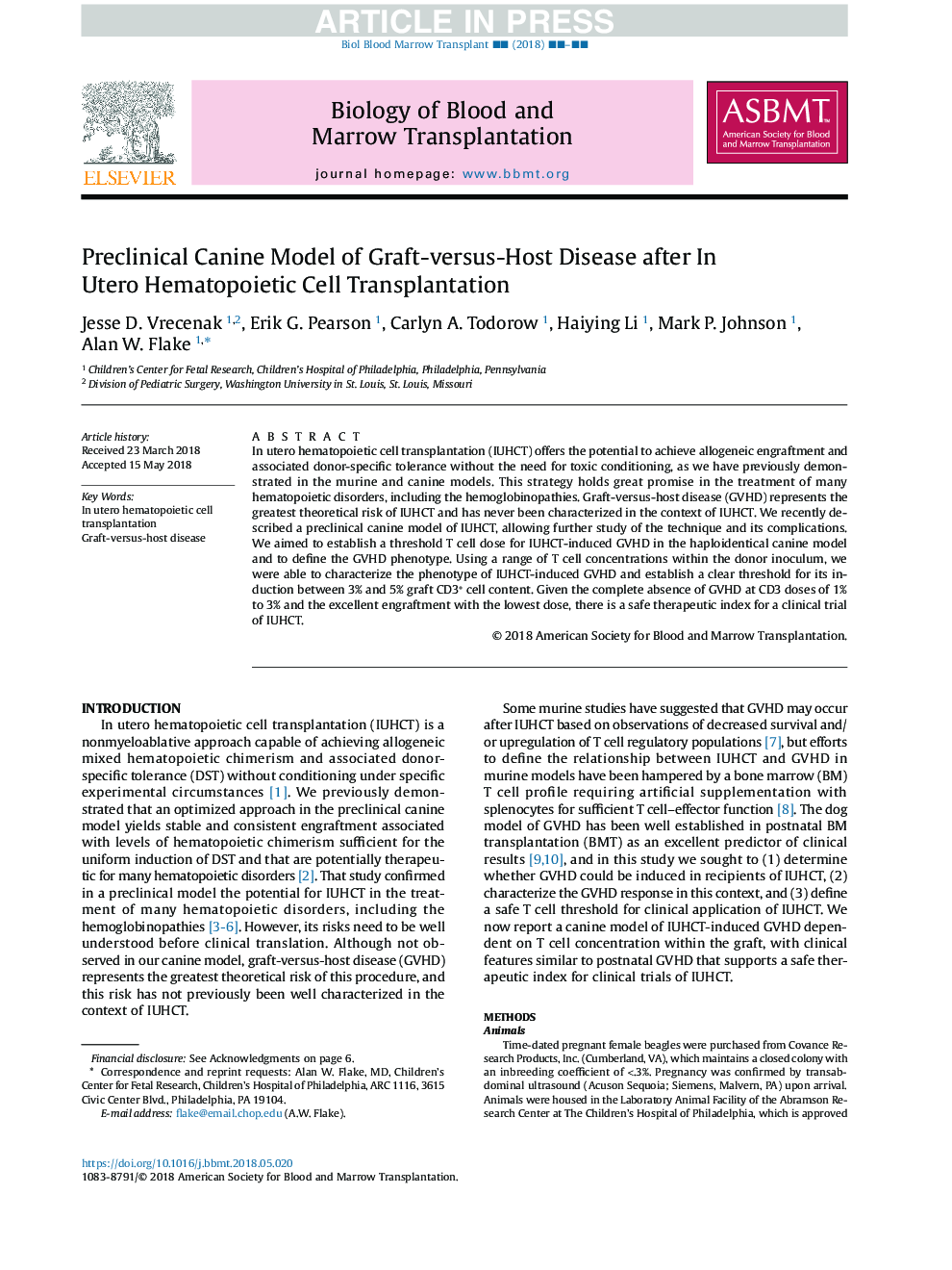| Article ID | Journal | Published Year | Pages | File Type |
|---|---|---|---|---|
| 10157448 | Biology of Blood and Marrow Transplantation | 2018 | 7 Pages |
Abstract
In utero hematopoietic cell transplantation (IUHCT) offers the potential to achieve allogeneic engraftment and associated donor-specific tolerance without the need for toxic conditioning, as we have previously demonstrated in the murine and canine models. This strategy holds great promise in the treatment of many hematopoietic disorders, including the hemoglobinopathies. Graft-versus-host disease (GVHD) represents the greatest theoretical risk of IUHCT and has never been characterized in the context of IUHCT. We recently described a preclinical canine model of IUHCT, allowing further study of the technique and its complications. We aimed to establish a threshold T cell dose for IUHCT-induced GVHD in the haploidentical canine model and to define the GVHD phenotype. Using a range of T cell concentrations within the donor inoculum, we were able to characterize the phenotype of IUHCT-induced GVHD and establish a clear threshold for its induction between 3% and 5% graft CD3+ cell content. Given the complete absence of GVHD at CD3 doses of 1% to 3% and the excellent engraftment with the lowest dose, there is a safe therapeutic index for a clinical trial of IUHCT.
Keywords
Related Topics
Life Sciences
Biochemistry, Genetics and Molecular Biology
Cancer Research
Authors
Jesse D. Vrecenak, Erik G. Pearson, Carlyn A. Todorow, Haiying Li, Mark P. Johnson, Alan W. Flake,
